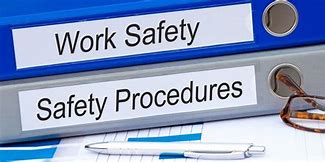The Occupational Health and Safety Act, Act 85 of 1993, requires the employer to provide and maintain as far as reasonable and practical a work environment that is safe and without risk to the health of employees.
Section 7 of the Act provides direction to employers concerning the health and safety policy of the organisation.
According to this section the employer will be obligated to have a health and safety policy once the chief inspector has directed him to do so. It would therefore not be compulsory for all organisations to formulate and implement a health and safety policybut the employer is still duty-bound to inform employees of work related risks and dangers. According to legal prescription the employer must inform employees how work related risks and dangers could be prevented.
A health and safety policy could prove to be a valuable tool in this regard, in fact the importance of work related policies and procedures cannot be over emphasised. In a home there are usually rules that the family abides by which brings order to the home. The same applies to the workplace; rules and regulations bring order to the workplace.
Employers need to comply with minumum standard legislation but the employer also have the right to set a better standard for their particular business. It is imperative to communicate these standards to employees and other role players like contractors. This should preferably be done in writing and these documents are called policies and procedures.
Policy documents also provide direction to all company activities and provide the criteria to measure and evaluate efficiency. In short, policies and procedures could be described as a set of documents that describe an organisation’s policies for operation and the procedures necessary to fulfil the policies. Without it, it would basically be impossible to effectively control and manage employees and other role players.
The primary objective of a health and safety policy should be to prevent or reduce work-related accidents and occupational diseases. An appropriate policy could help to avoid the expense, inconvenience, and other consequences of workplace accidents by making sure that employees and other role players know what is expected of them.
An employer who lacks the necessary rules and regulations in order to regulate the behaviour of employees and other role players cannot expect any sympathy if these persons misbehave and take advantage of the situation.
A health and safety policy is a written statement of principles and goals embodying the company’s commitment to workplace health and safety. There are no hard and fast rules about what to include in a policy. The employer should create a policy that is suitable and sifficiant in order to address the health and safety need of the company.
A good policy will indicate how the organisation protects those who could be affected by its activities and be broad enough to cover all aspects of the company’s activities.
The policy should be of an appropriate length and relevance to the activities and size of the organisation.
The health and safety policy statement can be brief, but it should mention:
1) a description of the organisation
2) recognize the need to comply with minumum standard legislation of the Occupational Health and Safety Act
3) recognize the priority of safety in relation to other organizational goals and policies
4) acknowledge the right of every employee to work in a safe and healthy environment
5) stipulates that management is accountable for occupational health and safety programs and management’s commitment to providing a safe and healthy work environment by eliminating or minimizing the hazards that can cause accidents and injuries
6) the organisation’s basic health and safety philosophy (statement of health and safety principles and goals)
7) the general responsibilities of all employees
8) that health and safety shall not be sacrificed for expediency
9) that unacceptable performance of health and safety duties will not be tolerated
10) encourage co-operation with unions and workers to involve all employees in implementing the health and safety policy into practice
11) the policy date
12) be signed by the chief executive officer
13) be visibly displayed for all workers to see
14) review date of the policy
The policy basiclly demonstrates how seriously an organisation takes its health and safety responsibilities. It is important to note that the employers are bound by the prescriptions of their spesific policy and could be held legally liable for not complying with it.
Monitoring that the policy is still effective is also very important, a policy will only be effective if it is reviewed on a regular basis.
The drafting; implementation and monitoring of the organisations health and safety policy is a clear demonstration of management commitment in this regard. Senior management must be committed to carrying out and review that policy consistently and completely.
Health and safety should enjoy the same priority as the organization’s other major objectives. Senior management must be committed to ensure that the policy is carried out with no exceptions.
Commitment and involvement are complementary to each other and are essential elements needed to spearhead any health and safety program to success.
Source; The South African Labour Guide

